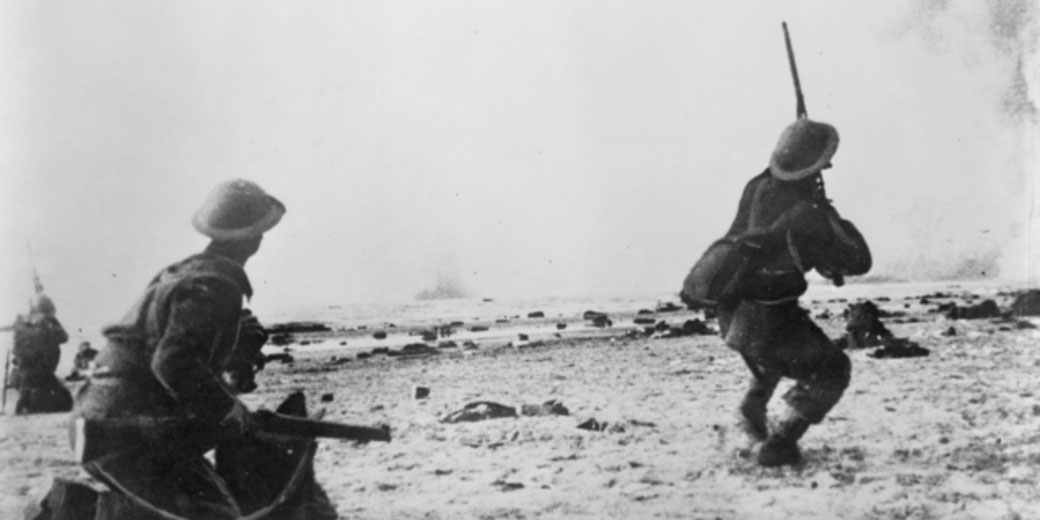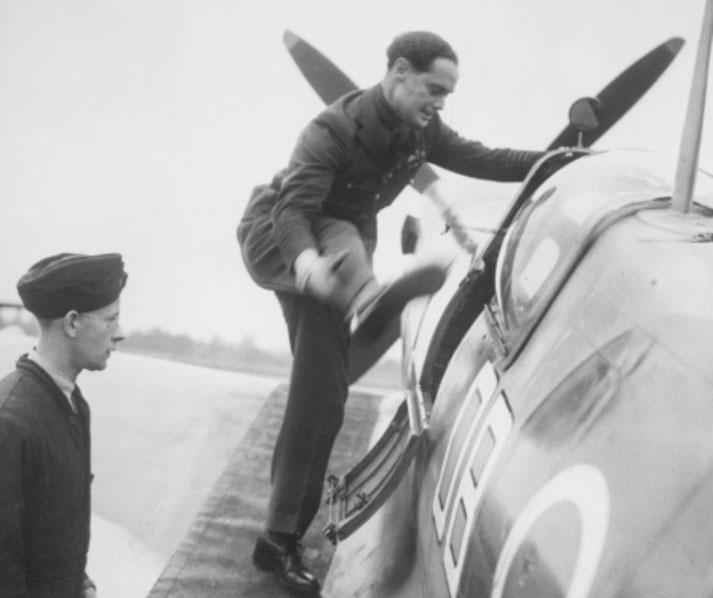Did Britain really ‘stand alone’ in World War II?

After the fall of France in June 1940, Britain faced Nazi Germany as the only undefeated Allied power in Western Europe.
This led to the enduring image of Britain ‘standing alone’ against Hitler’s unchecked aggression. In reality, however, how accurate was it to say that Britain was isolated?
How international exiled forces helped Britain fight on
Following France’s defeat, the U.K. passed the Allied Forces Act (22 August 1940) to recognize and host the armed forces of occupied nations.
This included Poland, Czechoslovakia, Belgium, the Netherlands, Norway, and Free France under de Gaulle.
It enabled tens of thousands of exiled troops to continue the fight from British soil.
By late October 1940, for example, some 18,000 Polish, 15,000 Norwegian, and 3,000 Czechoslovak personnel were in Britain’s Home Forces, alongside around 3,000 Belgian, Dutch and French troops, plus many naval and air force personnel.
These forces, even though they were displaced from their own homelands, contributed to Britain’s defense and to Allied campaigns abroad.
Clearly, Britain was not entirely alone in Europe. One of the clearest examples of international cooperation was in the air.
During the Battle of Britain, between July–October 1940, Britain’s RAF was supported by pilots from across the Commonwealth and occupied Europe.
In fact, one-fifth of Fighter Command’s aircrews were foreign volunteers, with 16 nations represented.
These included 126 New Zealanders, 98 Canadians, 33 Australians, 25 South Africans, as well as pilots from Rhodesia, Jamaica, and other British territories.
Equally important were the exiled European aviators: 145 Poles, 88 Czechoslovaks, 29 Belgians, 13 French and others flew in the Battle.
Winston Churchill’s famous praise of ‘The Few’ applied equally to Britons and these Allied fliers.
Notably, the Polish No.303 Squadron became the top-scoring fighter unit in the Battle of Britain.
They claimed 126 German aircraft shot down in just 42 days. On one critical day (15 September 1940) Polish pilots made up almost 20% of RAF fighters in action and shot down 16 enemy planes.
Air Chief Marshal Sir Hugh Dowding, the commander of RAF Fighter Command, credited the Poles in particular when he said that, “Had it not been for the magnificent material contributed by the Polish squadrons and their unsurpassed gallantry, I hesitate to say that the outcome... would have been the same.”

The allied nations that provided vital financial aid
What is often forgotten today is that Britian’s ability to hold out militarily was only possible with economic and industrial support from abroad.
By late 1940, after a year of war, Britain was nearly bankrupt. As U.S. President Franklin D. Roosevelt mobilized American industry as the ‘Arsenal of Democracy’, Britain struggled to pay for vital supplies.
In November 1940, Britain’s ambassador to Washington frankly told reporters, “Britain’s broke; it’s your money we want”.
And this was no exaggeration. The cost of continuous combat had drained Britain’s gold and currency reserves, meaning it could no longer afford to buy munitions abroad.
Recognizing Britain’s dire situation, the United States took unprecedented steps to aid its ally short of entering the war directly.
In September 1940, President Roosevelt approved the ‘Destroyers for Bases’ deal, in which he transferred 50 U.S. Navy destroyers to the Royal Navy to bolster Atlantic convoy escorts.
In exchange, the U.S. received leases on British bases in the Caribbean and Newfoundland.
This was a lifeline for Britain’s beleaguered anti-submarine forces and a sign of growing U.S.-UK cooperation.
The most significant aid came with the Lend-Lease Act of March 11, 1941. This empowered the U.S. to lend or lease war materiel to countries “vital to the defense of the United States”, which primarily meant Britain at first.
Under Lend-Lease, enormous quantities of weapons, vehicles, food, and raw materials flowed to Britain.
By war’s end, the United Kingdom had received over $31 billion worth of American supplies (equivalent to roughly $550 billion today).
This included everything from tanks and aircraft to foodstuffs that fed both civilians and troops.
For example, American bacon and powdered eggs helped offset wartime shortages in Britain’s diet.
Churchill later acknowledged that without this aid, Britain could not have continued the fight in the long term.
Nor was the U.S. the only source of material support. Canada was still a dominion but, acting independently, provided huge financial aid to Britain.
Ottawa extended Britain a “billion-dollar gift” in 1942. It was essentially an outright grant of about £225 million, and billions more in interest-free loans and supplies.
In total, Canada’s direct financial aid to Britain reached nearly $4 billion, on top of the Canadian war production shipped.
Other Commonwealth nations also made critical contributions to Britain’s supply lines.
For instance, India’s sterling credit was drawn upon heavily; by 1945 Britain owed over £1.3 billion to India for war expenditures advanced during the conflict.
Additionally, Australia and New Zealand provided raw materials and later hosted, with Canada, the British Commonwealth Air Training Plan to train aircrew far from the war.
In short, economically, Britain did not stand alone at all. It was propped up by the financial and industrial might of allies.
The miliatry contributions of Commonwealth countries
Perhaps the greatest source of non-British support came from within Britain’s own Empire and Commonwealth.
Far from standing alone, Britain could draw on manpower, resources, and industrial capacity from dozens of territories across the globe.
In 1939, the British Empire encompassed a quarter of the world’s population, and these human and material resources were mobilized for the war.
From 1939 to mid-1942, the British Empire and Commonwealth provided the bulk of Allied manpower on multiple fronts.
Close to 15 million men and women from British Commonwealth nations served in uniform during the war.
For example, the Indian Army expanded to about 2.5 million volunteer soldiers, which made it the largest all-volunteer force in history.
Indian troops fought in crucial theatres: they held the line against the Japanese in Burma, joined the Desert War in North Africa, and later fought in Italy.
Likewise, Canada, Australia, New Zealand, South Africa and other dominions raised large forces that fought alongside British troops in Europe, the Atlantic, North Africa, and Asia.
Commonwealth divisions were instrumental in early victories – Canadian pilots in the Battle of Britain, Australian infantry in the siege of Tobruk (1941), Indian and African troops in the East African Campaign, and so on.
In fact, Commonwealth forces fought Axis armies on three continents and in every ocean during the critical 1939–42 period.
This bought precious time for Britain.
As Britain’s factories were strained by bombing and overwork, it increasingly turned to imperial production.
Canada became a major arms manufacturer, launching over 150 new factories by 1941 and achieving an annual output of £800 million worth of war goods.
Canadian industry produced everything from trainer aircraft to motor vehicles and artillery, not only for Commonwealth use but also for Britain and even the Soviet Union via Lend-Lease.
Smaller colonies, too, pitched in: Trinidad’s oil fields supplied the largest share of Allied oil in the war, Ceylon (Sri Lanka) produced 60% of Allied rubber, West African colonies sent metals like tin from Nigeria and manganese from the Gold Coast, while others grew food and cash crops to ship to Britain.
Britain essentially tapped into a global supply chain through its empire.
People who were still fighting the Germans in Europe
Churchill recognized early on that supporting resistance behind enemy lines could undermine the Nazis and assist Britain’s war effort.
In July 1940, he created the Special Operations Executive (SOE) with orders to “set Europe ablaze!”.
SOE agents worked with local partisans across Europe, from the French Maquis to the Polish Home Army, providing them with weapons and training.
These resistance movements engaged in sabotage, guerrilla warfare, and espionage against German occupying forces.
In effect, Britain cultivated an informal second front of irregular warfare behind Axis lines.
Moreover, the knowledge that people under Nazi rule were still fighting back helped Britain’s resolve during the lonely years of 1940–41.
While these resistance fighters were not under British command, a mutual relationship existed.
Britain sustained them with supplies and inspiration, and they in turn acted as Britain’s ‘eyes and ears’ in occupied Europe.
Was Britain ever truly alone in the war?
As can be seen, the idea of Britain ‘standing alone’ in World War II is a powerful narrative of courage during the difficult period from 1940–41, but it hides the fuller picture of Britain’s place in a worldwide alliance.
In a narrow sense, Britain did fight on alone after France’s collapse by refusing to surrender when no other free country remained in Europe.
This decision to continue the war was crucial. Had Britain capitulated in 1940, the trajectory of WWII would have been vastly different.
However, Britain was never truly alone. It leaned on its Empire for troops, resources, and money; it relied on Allied nations and exiles who fought alongside British forces; it benefited from U.S. economic support well before America entered the war; and it coordinated with resistance movements that kept the flame of hope burning in occupied lands.
Even during the darkest days, Britain’s war was a collaborative effort.
What do you need help with?
Download ready-to-use digital learning resources
Copyright © History Skills 2014-2025.
Contact via email
With the exception of links to external sites, some historical sources and extracts from specific publications, all content on this website is copyrighted by History Skills. This content may not be copied, republished or redistributed without written permission from the website creator. Please use the Contact page to obtain relevant permission.





